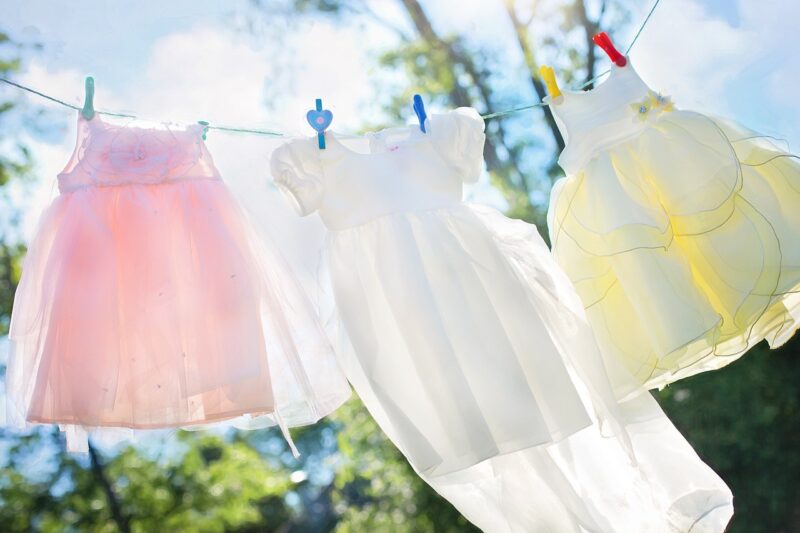The Story of Wrangler Jeans: How It Became a Symbol of American Style
November 14, 2024

When you think of American style, certain iconic images come to mind: the cowboy riding through a rugged terrain, the leisurely Sunday BBQ with friends, or the nostalgic feel of a classic drive-in movie. Prominent among these symbols is Wrangler jeans, a brand that has come to epitomize Americana through its rugged construction, durability, and timeless appeal. In this article, we delve deep into the story of Wrangler jeans, exploring their origins, evolution, and the cultural significance they hold in American fashion today.
1. The Origins of Wrangler Jeans
The story of Wrangler jeans begins in the post-World War II era in the United States. In 1947, rancher and Western clothing designer, C.Q. (Curtis) McClendon’s vision was clear – he wanted to create a jean that catered specifically to the working cowboy. This vision led to the establishment of the Blue Bell Overall Company, which initially focused on producing workwear and uniforms.
C.Q. McClendon believed that farmers and ranchers deserved a pair of jeans that combined function and style. In pursuit of this goal, he partnered with fashion designer, Rodeo Ben, and together they created the first Wrangler jeans. The design included features tailored for rodeo athletes such as riveted pockets, a higher waistline, and a variety of sizes and fits with the needs of cowboys in mind. This marked the birth of a brand synonymous with rugged outdoor life.
2. The Rise to Popularity
As the 1950s rolled in, Wrangler jeans began to make waves not just in the West but across the nation. With the explosion of the cowboy culture and the burgeoning interest in Western films, Wrangler positioned itself at the forefront, becoming a staple for both ranchers and everyday people alike.
One of the key marketing strategies was sponsorship of rodeo events and country music shows, which allowed Wrangler to cement its place in American pop culture. Stars like John Wayne and later, Elvis Presley, donned Wrangler jeans, which translated to a rapid increase in popularity. By the 1960s, the brand was already on its way to becoming a household name, representing freedom and rugged masculinity through its advertising campaigns.
3. Innovations and Expansions
The late 1960s and early 1970s saw Wrangler continue to innovate its product line. A significant development was the introduction of the Wrangler 13MWZ model, which featured a more tailored fit and clean lines. This appealed not only to the working man but also to a wider audience looking for fashionable yet durable jeans.
The brand embraced new materials and technology, ensuring that Wrangler jeans remained functional. The introduction of stretch denim in the 1980s incorporated a comfortable fit and appealed to a young, newly evolving demographic. By also launching different lines such as Wrangler Western and Wrangler Casual, the brand expanded its reach to cater to a diverse audience. The awareness of LGBTQ+ representation within the Wrangler brand also grew, paving the way for further inclusivity in advertising.
4. The Changing Face of Wrangler in Popular Culture
As the cultural landscape shifted through the late 20th century into the 21st century, Wrangler jeans adapted to stay relevant in the fashion world. The brand has echoed the sentiments of sustainability and quality craftsmanship, which became crucial in consumers’ purchasing decisions. Wrangler partnered with various organizations to promote sustainability in their production processes, further solidifying their reputation as a socially conscious brand.
In recent years, notable collaborations with celebrities and fashion influencers have allowed Wrangler to stay trendy. The partnership with Rihanna for her Fenty collection showcased the blend of high fashion with classic Americana. Additionally, maintaining a strong presence in country music, arts, and western-themed events keeps the brand intertwined with its roots while drawing in a younger demographic.
5. The Cultural Significance of Wrangler Jeans
Wrangler jeans have transcended their original purpose of practicality, evolving into a sartorial symbol of American identity. More than just an article of clothing, they represent freedom, authenticity, and the spirit of the American West.
Across numerous subcultures – from rodeo cowboys to rock musicians, and even fashion runways – Wrangler jeans have found a place, showcasing the versatility and timelessness of the brand. They symbolize resilience, innovation, and craftsmanship, echoing values deeply ingrained in American society.
Conclusion: Wrangler Jeans as an Enduring Symbol
From humble beginnings in the aftermath of World War II to becoming a global icon, the story of Wrangler jeans is a testament to the enduring nature of American style. The blend of work, culture, and fashion makes Wrangler more than simply a clothing brand; it embodies a way of life and an enduring connection to the rugged American landscape.
As we look toward the future, one thing is clear: Wrangler jeans will continue to symbolize American spirit, merging tradition with modernity whilst providing comfort and style to new generations seeking a timeless wardrobe staple. With each pair, we carry a piece of American history that is as relevant today as it was when the first pair rolled off the production line.
Whether you’re headed out on a ranch, to a concert, or just enjoying a casual day with friends, slipping into a pair of Wrangler jeans is akin to wearing a part of the legacy of American fashion. As the blue jeans endure and adapt, Wrangler remains a steadfast symbol of style, durability, and, above all, an unmistakable slice of Americana.








